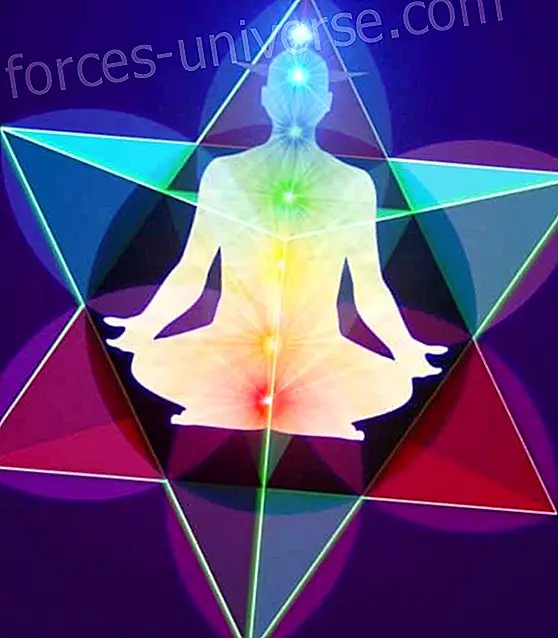
Life is a continuous process of personal highs and lows, professional, emotional and of course physical. All of us at some point in our existence have had, directly or indirectly, to face this continuous process of learning that is to live and that most of the time is embodied or crystallized in our body, especially in This anatomical structure is what constitutes the axis of our personality: the spine.
Recovering, healing from discomfort or injury to this vertebral axis is a long exercise that requires patience. It is necessary to go up one by one the steps of the health that we have been going down; stop at landings; take a little breath and start again at the rate that physiology and wisdom of our body dulceously imposes on us. A bone takes three months to consolidate and ten years to fully recover. A ligament takes five weeks to heal and a spine may require, depending on what cases, months or years to be straightened.
The evolution of musculoskeletal disorders related to the spine, except in serious accidents, most of the time is usually installed progressively. It begins with a simple local banal discomfort, a simple "contracture" that if not treated effectively, becomes a chronic soft tissue injury, reversible at the beginning and over time in a vertebral joint block, sometimes irreversible.
The disease evolves in stages or phases, the point is that something relatively benign, such as a minor discomfort in some area of the spine, can initially produce an energy disorder, then a functional disorder, to later move on to a irreversible injury, especially if our immune system is weak or we are going through an emotionally difficult stage, apart from receiving ineffective or non-existent treatment.
Receiving an effective and preventive Osteopathic treatment is the basis to stop the spinal injury process and find the natural balance of this spinal axis again.
Otherwise, when the discomfort has become irreversible, it only remains that the Osteopathic treatment temporarily relieves or delays the degenerative process, this is when the surgery is ultimately imposed. Then I will explain as briefly as possible the four fundamental phases, in my opinion, that determine the health of the spine.
First phase:
The energy disorder is usually the most frequent, but difficult to recognize. The causes can be internal: dietary disorders and especially the digestive system derived from emotional or psychic tensions (depressions, excitations, intellectual fatigue ...) that can lead to discomfort in an organ producing a projected pain at the vertebral level. For example, some liver disorders are reflected at the dorsal level, specifically in the dorsal vertebral number 8 (D8) on the right, a hiatus hernia may be reflected in D7 as well as digestive disorders.
We also have external causes, that is, weather, air currents, cold, heat, humidity, electromagnetic disturbances, pollution, incorrect postures at work, false movement, stress ..., etc.
These causes will create a blockage of blood circulation that is the main energy source of the body, along with the nervous system.
It is normal for our body to be able to self-cure in the face of minimal energy blockage and trigger homeostasis (internal balance) that will lead to an increase in local blood flow, thus improving the function of the affected vertebral zone, for example: a torticolis that Forward at the end of the day.
But as I noted earlier, if we are emotionally "low" this is complicated and the body runs the risk of not recovering alone. And if we do not do a global treatment, attending not only to the physical but also to the emotional origin of the disorder, there is a risk of evolving towards a functional injury and then towards a serious injury.
For this type of energy disorders the recommended treatments would be: rest in case of fatigue due to excess activity, heat for cooling and humidity, Osteopathic unblocking of the vertebral zones involved and tonification or sedation with phytotherapy of the involved organs (liver, kidneys …, etc.).
Second stage:
Functional disorder These types of dysfunctions constitute 70% of spinal dysfunctions and too often they are only treated symptomatically.
Normally they appear as a consequence of a mechanical cause, that is, a false movement, a sudden effort or a trauma that causes a vertebral block or a sprain in one or several distal joints, that is, far from the spine, this occurs in accidents of circulation and sports without fracture or dislocation, for example, whiplash or sprained ankle. The latter, especially when it is relapsing (repetitive), can affect the balance of the pelvis and later cause changes in the lumbar spine, for example lumbago or sciatica due to spasmodic contractions of the pyramidal muscle of the pelvis.
This type of functional disorders is characterized in that the joints lose their mobility, the muscles that hold the spine retract and the intervertebral ligaments become painful on palpation. The pains are installed progressively and the disorder in an energetic principle becomes functional.
In terms of treatment, functional impotence and pain should not attempt to be remitted with anti-inflammatory and anti-allergic drugs since this will chronify the alteration, leading to the next phase, that is, the transformation into a deeper lesion.
It is necessary, therefore, an Osteopathic check-up, Postural Global Stretches and temporary stays in hot springs spas.
Third phase:
Reversible injury disorders. These lesions are either traumatic (accident, fall, violent effort) or progressively (osteoarthritis, arthritis ...) until they affect the entire structure of the spine.
The intervetebral discs are usually composed of 80% water, these lesions tend towards a progressive dehydration of these which creates compression injuries, that is: coinage or crushing and sudden herniated discs of traumatic origin as I indicated earlier.
Disc fissures, which eventually become protrusions, fall into these types of reversible disorders.
Sprains, either simple or severe, also manifest themselves in this phase.
Postural imbalances favor the erosion of cartilage, with the consequent early onset of osteoarthritis.
The back muscles undergo chronic shortening and what are called postural compensations occur, for example: one shoulder higher than another. It is an effort that the body makes in search of solutions for the reversibility of vertebral lesions, even if it is incorrect.
In this phase the deterioration of the cartilage is usually noticeable, due to the postural imbalance of the spine that will significantly affect the knees, giving rise to chondropathies: chondromalacia, softening of the patellar cartilage.
As for the bone, sometimes, fractures of the vertebral processes can occur, that is, the bone reliefs that we can palpate along the spine. These fractures are not dangerous to the spinal cord if they consolidate without complications.
Treatment in this phase requires a joint action: Osteopathy, Podiatry, Postural Reeducation and Naturopathy.
On one occasion I had a patient who with a drastic change in his diet, Postural Reeducation and a long-term treatment of Osteopathy could make an osteoporosis problem reversible.
Fourth phase:
Irreversible lesion disorders . This is one of the phases that is reached if we do not start doing preventive treatments and we leave the "luck" and certain professionals the complete or total management of our health. That is, we are not responsible for it. These are pathologies in which there is a deep change of soft tissues (muscles, ligaments, fascia, cartilage, synovial capsules) that eventually leads to definitive changes in homeostasis (internal balance) of the body and therefore of spine.
The causes can be several: surgical scar retractions, vertebral compressions due to osteoporosis, complications due to vertebral imbalances that were not treated in the reversible phase, severe trauma that causes an accompanied nerve comprehension of paralysis in both legs, narrowing of the medullary canal by accident, significant bone deformations, for example Pagett.
From my experience, the treatment would never lose hope in finding a solution. Imposing surgery as a last resort.
I hope this article has been able to give you light about the phases of the development of spinal injuries, in order to raise awareness and be alert to preserve your most precious asset: health.
Eutiquiano Endje
Osteopath, Craniosacral Therapy, Postural Reeducation
www.cuerpozen.com
Vertebral lesions: its 4 phases, by Eutiquiano Endje






